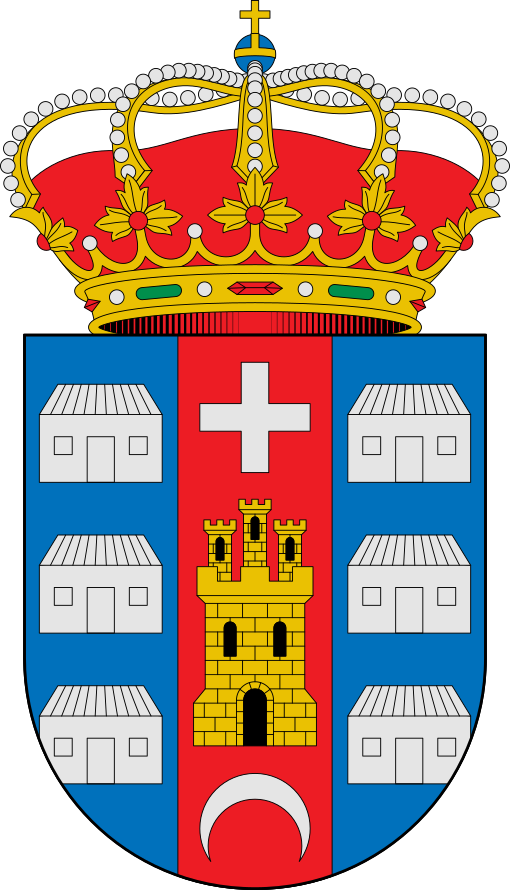Granted 1969
Blazon: Gules a city or, church and houses windowed of the field, in chief a Maltese cross argent
These aren’t the most elaborate or exciting arms I’ve seen, but there’s something very satisfying about them. They are, as you might have guessed, canting arms – a city, or villa, and a Maltese cross, the symbol of the order of St. John, or San Juan. The town’s name also encapsulates both its history and structure: the land where the town currently lies was granted to the Order in 1173, and a church was later built on the ruins of one of their fortifications. The fortification apparently enclosed enough of the town for it to become known as villa harta, or a tightly walled city. There’s no need to be fancy about it – you can just call the town what it is, and then represent that on its arms.









